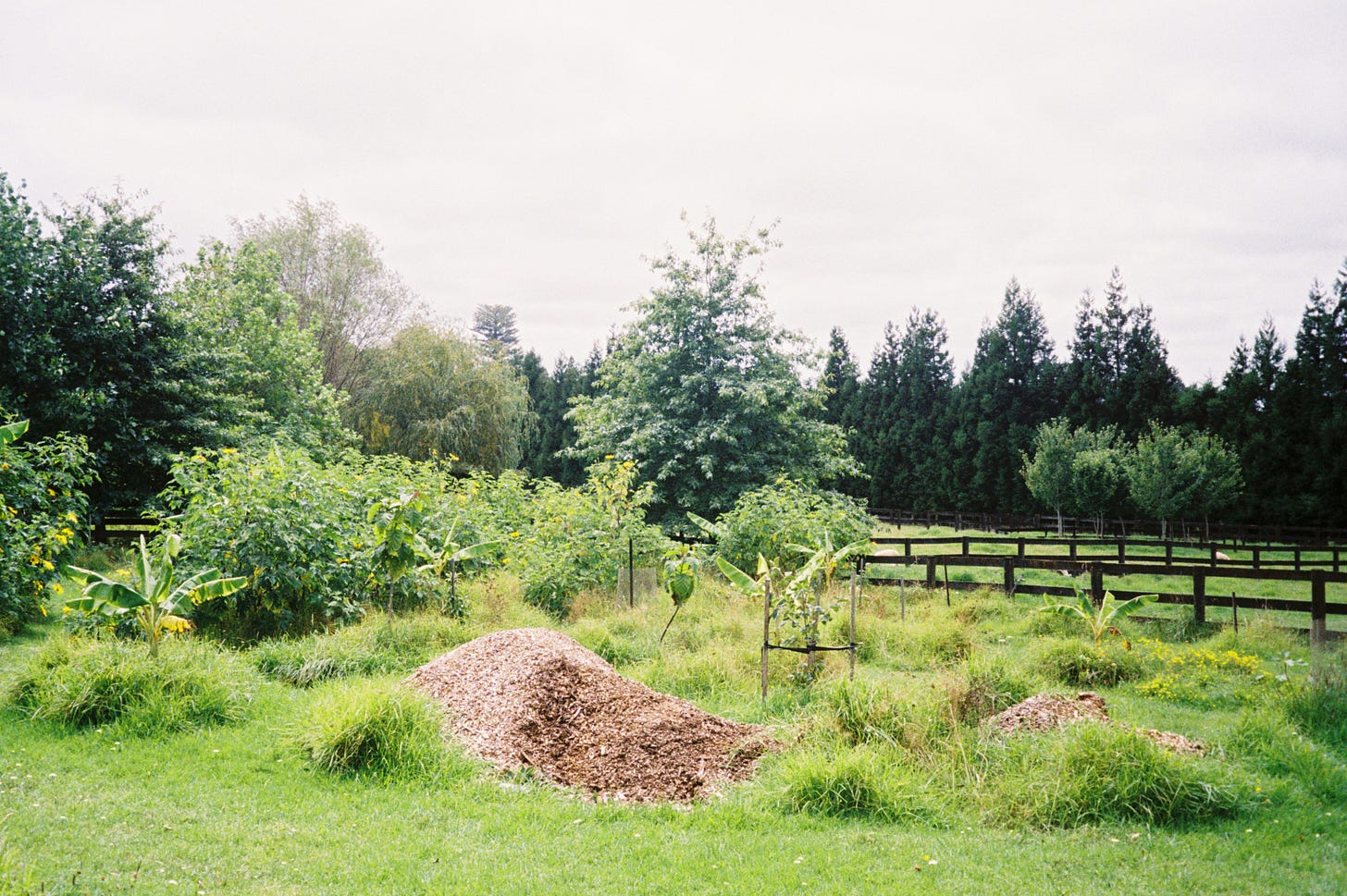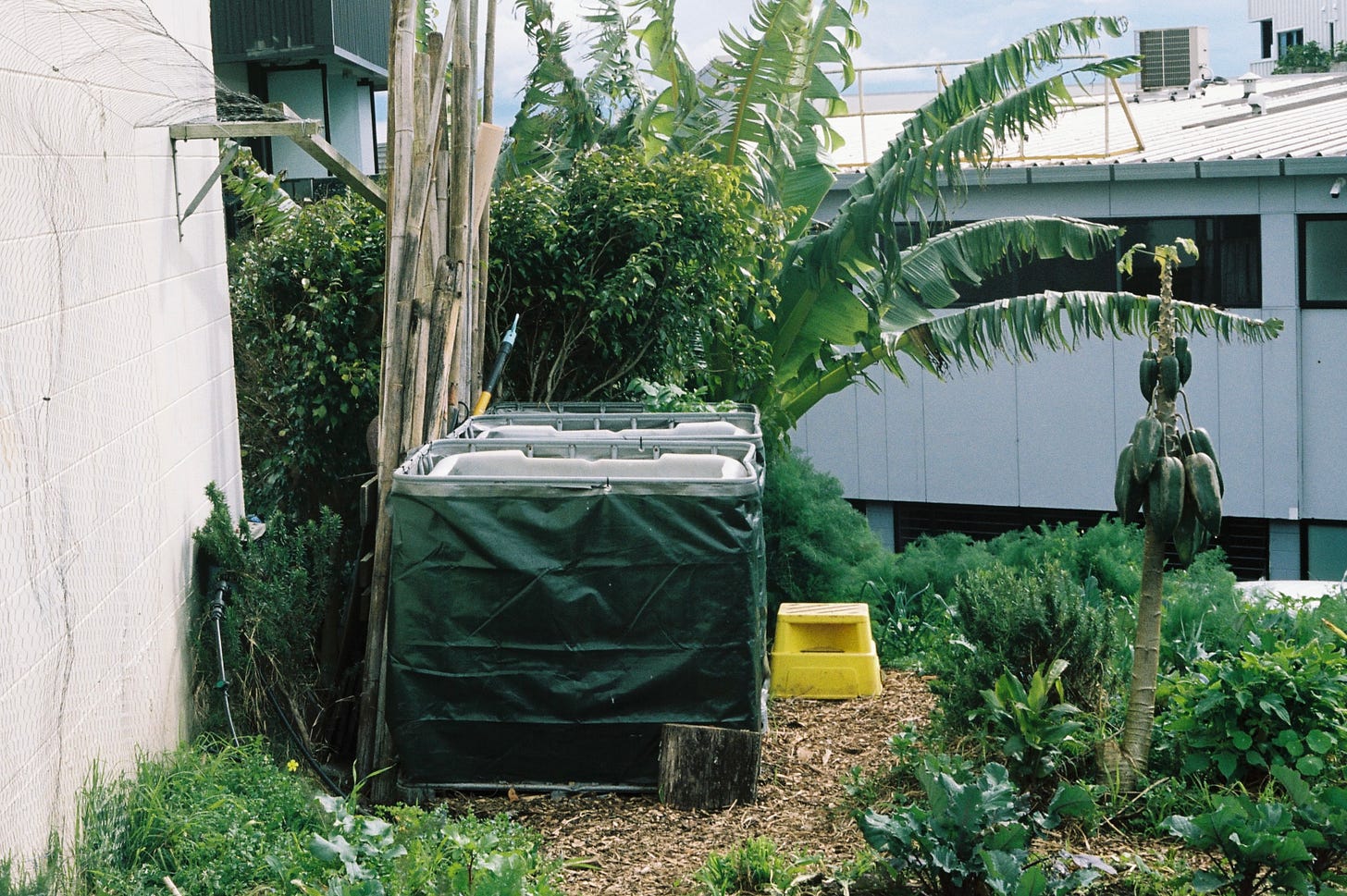LAGOM - May 2025
Fibre-loaded recipes, pesticides and health, an alternative agricultural system and the people who are already growing food differently
Hello, hello!
May felt so short, and with work taking precedence, this month's newsletter includes curations of our published pieces to learn how to reduce synthetic chemical intake in our body and, generally speaking, in our lives. First, we have a collection of seventeen fibre-loaded recipes—read further to understand why. Then, we discussed the consequences of pesticides on health, and finally, we explored concrete responses to prevent pesticide use in our agricultural system and learned more about those who have already made the shift. It is a dense program!
This month's topic was triggered by recent news. First, some French MPs are trying to pass a law that would, again, authorise the use of specific neonicotinoid pesticides in agricultural production. It is an issue because synthetic pesticides cause a tremendous decline in pollinators, triggering a cascading effect, reducing the cycle of foods relying on pollination for production [most of our food]. They also impact global insect populations, other animals, and our proper health. Then, in Aotearoa, New Zealand, NZ Food Safety is pushing to increase the maximum levels of glyphosate residues in food. Previously, in 2023, the European Commission renewed the authorisation of glyphosate for ten years. Disappointing. All in the name of favouring industrial agriculture while impacting our health and nutrition, and exacerbating the effects of climate change.
It feels like those who are supposed to support and protect us, such as governments, are more interested in favouring corporate deeds. Yet, it doesn't mean we are helpless or hopeless. We can, from where we are, make practical, affordable and straightforward changes to preserve ourselves and our environment.
Find your favourite fibre-loaded recipe
While there is no doubt that a plant-based diet offers incommensurable benefits to prevent diabetes and heart diseases and preserve our environment, a new study, relayed by the Guardian, is starting to find a correlation between the consumption of dietary fibre in reducing levels of two common PFAs in the human body. Research is still in its early stages, but promising. Here, as we are all about prevention, we compiled seventeen recipes containing fibre for you to build a recipe collection that could help you mitigate the harmful effects of pesticide intake.
Beans. Fulfilling and easy to pair with other food, try these brothy miso beans, beans and onions or cannellini beans with caramelised leek. After a snack or light lunch? We have you sorted with smoked baked beans on toast or miso beans on toast with avocado.
Chickpeas. Perfect for dinner or on the days you crave comfort food, our vegan eggplant Caponata and cauliflower kumara chickpea curry.
Lentils. First, check out how to cook lentils + Trace’s staple salad recipe or lentil and tempeh salad with tahini dressing for the perfect lunch ideas. And for dinner, try this vegan lentil recipe with tofu and kale or our vegan lentil bolognese.
Peas and green beans. Fibres and bright colours with this chilled pea soup, peas with minted garlic butter and some sautéed frozen edamame and broad (fava) beans.
Oats. Let’s not forget the oats! We have two delicious savoury porridges on offer, working well for breakfast or lunch, our ancient grain or mixed spices.
Finally, check out this vegan potato salad that includes a list of high fibre foods and the 16 plant foods to up-level your immune system.
What are the consequences of pesticides on health?
With the excessive global application of pesticides in agriculture and, apparently, no willingness from authorities to decrease their use, it is vital that we raise our level of scientific literacy to understand the consequences of pesticide exposure on our bodies. When we think critically, we gain a better understanding of what is happening, what choices are best for us and our environment, and what to protest against. In this section, we share three pieces of scientific vulgarisation: pesticides and cancer risk in mainstream agriculture, pesticide exposure and impacts on zebrafish development—another read and reason to eat more organic and Endocrine Disruptors, what are they and how to avoid them? helping you navigate the subject.
How do we prevent pesticide use in our agricultural system?
It might still be up for debate in parliamentary spheres. Still, it is important to remember, remind and repeat that, yes, an agricultural system that does not rely on the use of synthetic pesticides to nourish populations is possible. It is, in fact, a reality in many places around our Earth. This month, linking again Regenerative organic agriculture. Beyond sustainability in addition to What future for food production in New Zealand? for an overview of what a resilient food system could look like without pesticide use. Moreover, you will read all about the places that have already made the shift through How innovative micro urban farms can feed cities and Future Prospects—Kelmarna Gardens, in Aotearoa, New Zealand and elsewhere in the world.
Conversations with the people growing pesticide-free food + bonus
Since inception, we have met incredible individuals who were brave enough and curious enough to question conventional food production and move away from working with synthetic pesticides. They are proof that agroecology and permaculture farming is a tangible solution to secure and produce pesticide-free, nutrient-dense, resilient food for all, in and outside cities, at all scales—Niva and Yotam Key through their farm Pakaraka in Coromandel; Jake Clarke who worked in the heart of the city at Organic Market Auckland, and Ellen Eskildsen, who transformed her suburban garden into a thriving food forest in St John. And because flowers are food for the mind, after all, also read about floral artist Melanie Stapleton, who transitioned towards a more ethical and sustainable way for her practice.
Amandine's edit
Last year, WWF Deutschland created Climate Realism, a digital exhibition visually interpreting how climate change could impact the landscapes featured in famous Western paintings. The collection includes artworks from Monet, Gauguin, Pissarro and more, with the goal of motivating political action before these scenes are lost forever. Details on the exhibition are found here.
Auckland-based label Ah Tua popped up on my Instagram a while ago, and in a world where fashion and styling sometimes feel like a series of copy-pasting, Ah Tua is a breath of fresh air. Family owned and made to order, the line, “a blend of [our] culture, charisma, uniqueness, nerve and talent”, conveys an energy and glamour that hits differently, with original, modern cuts and a strong cultural and visual identity. I would be keen on the Vine jumpsuit or Denim Pacific jacket.
Time flies, and I have been back in Europe for a year already. I am still slowly building my home collection, and the other day, I came across Toast, a Welsh e-commerce platform focusing on thoughtful, slow living. What interests me most is the homeware section; I am eyeing some glassware and plant pots.
Tracey's edit
While much of this newsletter focuses on pesticides in our food, pesticides and other chemicals are present in much of the consumer goods we are exposed to daily. This research into glyphosates in tampons is deeply concerning, though not surprising. This research also touches on PFAS (per- and polyfluoroalkyl substances).
Referred to as ‘forever chemicals’, due to the fact that they persist, are accumulative in our external and internal environments—read, our bodies, studies have linked these chemicals to cancer, reproductive issues, endocrine disruption, and various health effects. It is not only tampons, pads and period underwear that pose risks. If possible, purchase organic products. If you are unsure, reach out to the brand you are purchasing and request a PFAS report.
While there is no scientific evidence to demonstrate the benefits of castor oil for hair growth, there is for rosemary, and I want to try Living Libations Castor Oil + Rosemary Verbenone because all their products are beautiful. I have spoken before about HINU Hair Growth Oil, having used it personally and will buy this again, but also want to try the Living Libations oil. So if an LED hair helmet is not currently in your budget, let’s try an oil. Apparently, rosemary can also reduce grey hairs. This study found a significant reduction in grey hairs and an improvement in hair growth over 120 days. If you are in Australia, you can purchase from One Fine Secret.
Also hair related, last July I started a WelleCo subscription for The Super Elixir™ which was initially to support my skin health (which was not great at the time) and to increase my intake of micronutrients otherwise difficult to include in a diet—for example, this product includes aloe vera, biotin and zinc that promote healthy skin, hair and nails. And most of the ingredients are organic. I also prefer not to take tablet supplements, so the idea of a powder is far more appealing. Anyway, I stopped taking this for a couple of months, and my skin got worse, and my hair seemed to be thinning so I restarted two months ago, and I am not going to stop now. Even though I am on medication for my skin, I know that The Super Elixir™ is a part of why my skin is improving. My hair growth has improved, so if like me you are seeking products you can easily include in your daily routine that will improve your skin and hair, I would suggest trying this for two or so months.
Thoughts, questions, you can always direct reply to these emails. We look forward to hearing from you!
Tracey Creed & Amandine Paniagua











